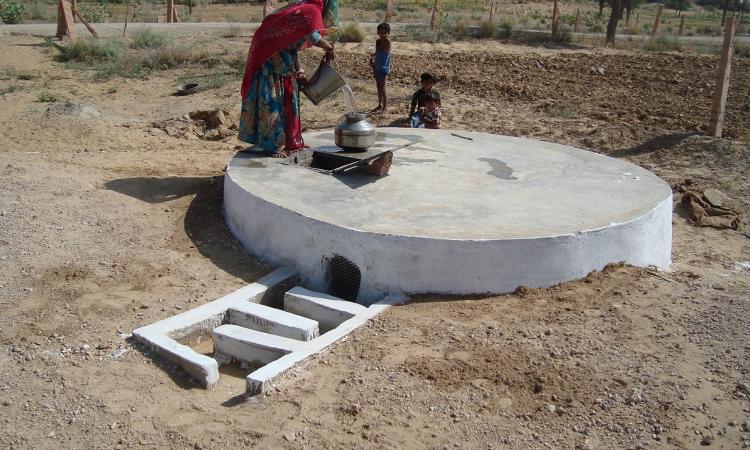
Erratic rainfall, heavy storms, extreme weather and droughts are some of the major impacts of climate changes. Though it affects everyone, certain sections of society, like indigenous people who live closer to the natural environment, are in fact more vulnerable to these variations. However, they are also the first to observe, identify and formulate required strategies to adapt to climate change. This wisdom, insight and knowledge of local people is termed as indigenous technical knowledge (ITK). Can this wisdom be recognised and the already available knowledge be integrated with our formal basic research to combat climate change better?
A paper titled ‘Assessing the Potential of Indigenous Technological Knowledge (ITK) for Adaptation to Climate Change in the Himalayan and Arid ecosystems’ published by ‘Indian Journal of Traditional Knowledge’ addresses the issue of assessing the potential of indigenous knowledge towards adaptation to climate change. The study covered a sample of 100 farmers each from Himachal Pradesh and Rajasthan, representing Himalayan and arid ecosystems respectively. Documentation of the ITK's was done using both primary and secondary sources of information.
The major ITK revealed in the study includes:
Himachal Pradesh farmers:
-
- Predict rainfall through movement of insects and animals. For example, if honeybees fly toward the northern hills, there will be no rainfall; and vice versa.
- Carry out disease management through application of wood ash in fields to supply nutrients and control pests.
- Use crush of ‘rambaan’, a local plant, with irrigation water to control pests in rice fields.
- Follow rainwater harvesting through 'chal’, a local small water storage structure that helps reduce the vulnerability of farmers under prolonged dry spells.
- Incorporate in their diet ‘siddu’ or ‘khobli’, an ethnic fermented wheat product, that protects them from extreme cold.
- Cover the top of triad shaped forage structure with low cost locally available polythine.
Rajasthan farmers:
-
- Believe that many butterflies indicate good rainfall, as does the appearance of ants and termites.
- Consider that extra bushing of ‘khair’, a common, local tree, points to a dry spell.
- Predict rain by the clour of the moon; a pale, yellow colour means good rainfall, whereas red and white indicates rainless conditions.
- Believe that good rainfall occurs every 5 years.
- Build ‘kanabandi’, a micro wind-break built with locally available vegetations, to intercept high velocity winds.
- Follow 'jhoor, 'a traditional soil management system, that involves the cutting of local shrubs and grasses into very small pieces and spreading over farmland before cultivation to improve soil quality and productivity.
- Carry out a traditional practice 'jhopa', that involves covering tree-saplings by local brushwood for protection against strong sun, winds, cold winters, and also protection of grazing by free animals.
- Use 'khadin/ khudi' or oasis farming system to harvest water for growing crops without any irrigation as the soil is fertile.
- Construct 'jupka', a traditional fodder storage structure, to preserve fodder from spoilage by climatic changes.
- Make 'kothi/tuke', a grain storage structure made of cowdung, soil and local grass with a cement base to keep inside temperature low and prevent attack of termites and insects.
- Use farm compost to increase soil fertility and reduce termite attacks.
- Construct 'tanka', a water harvesting structure, that collects surface runoff water.
- Act against climate change related health related hazards by using local plants in their diet.
- Make a cover/outfit for animals called 'ola/chappar', made from local grass to protect them from high temperatures.
- Use local remedies for animals diseases like dysentery and arthritis.
Validation of ITKs
Each of these ITKs was ranked based on the degree of their use and relevance under changing climate conditions. The study revealed that these ITKs were highly useful for the local community to manage climate change induced stresses.
The study disproves the myth that innovation must always be transferred from the lab to the land. It concludes that the indigenous wisdom widely practiced by communities before farming began, are highly relevant for climate change adaptation. The paper concludes that these technologies are restricted unequally in the community and even outside it, and thus government intervention is essential. Not only must it diffuse this knowledge in the region but also develop an appropriate policy for its validation and eventual adoption by farming communities.
/articles/traditional-wisdom-key-combating-climate-change